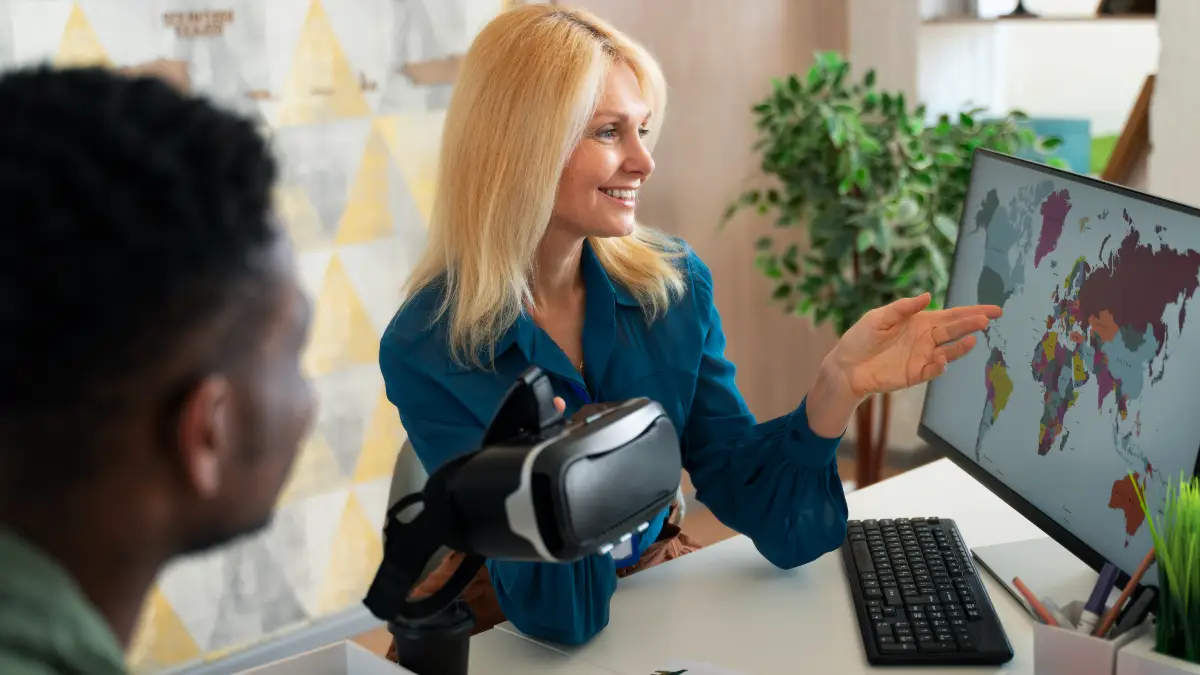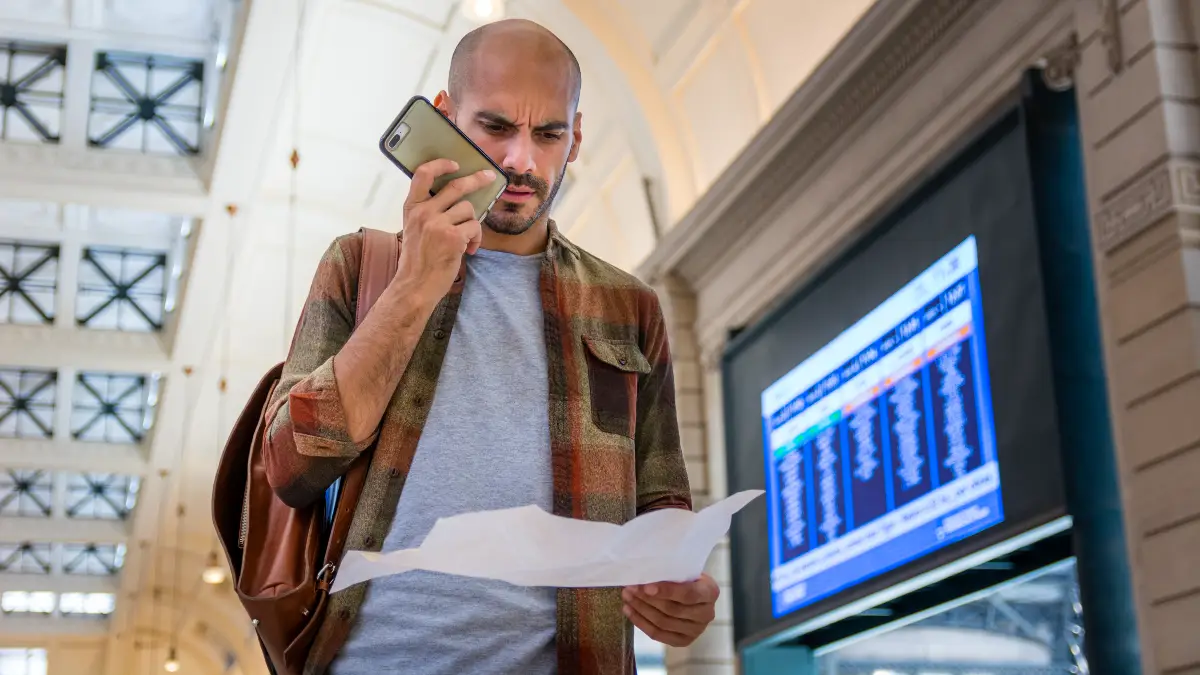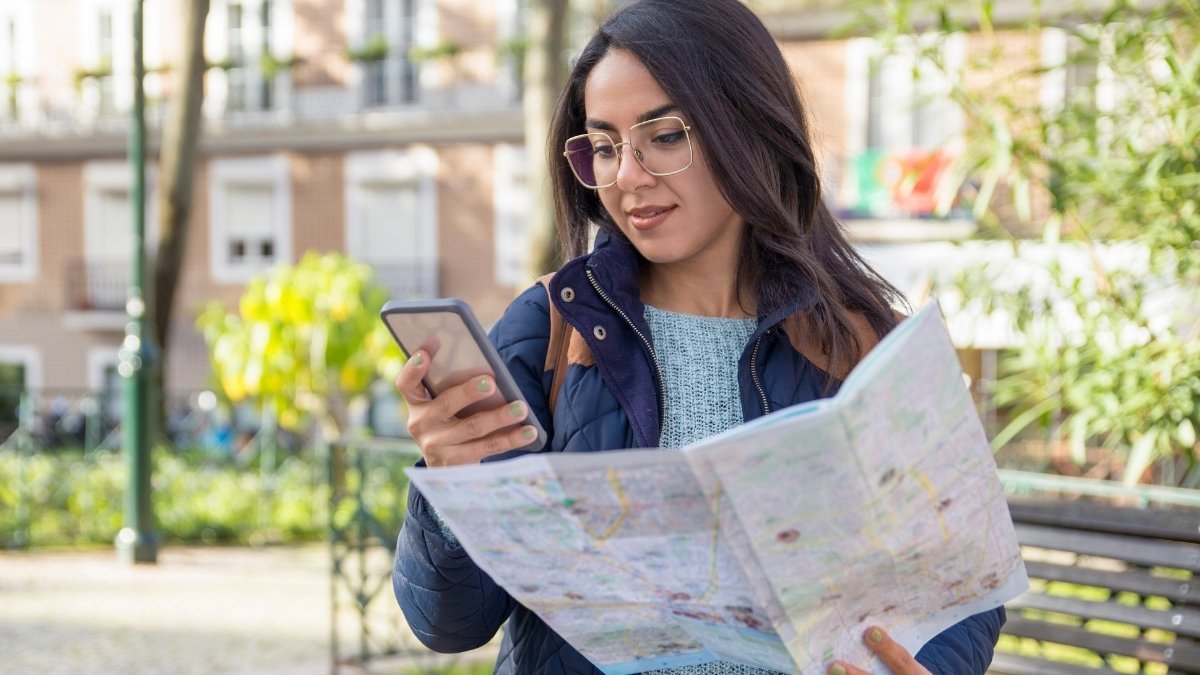That perfect itinerary ChatGPT just created for you has a 90 percent chance of being wrong. You could be sent to a museum that closed last year or a restaurant miles out of your way.
For millions of travelers, AI promises an easy fix to the headache of vacation planning. The reality is a mess of logistical nightmares and even dangerous situations.
This guide breaks down why your new AI travel agent is failing so badly and what you must do to avoid having your trip ruined by its confident mistakes. You will learn how to use these tools safely, so your next adventure is memorable for all the right reasons.
Why Everyone Wants an AI Travel Agent (and the Big Problem)

Using an AI travel agent sounds great. We have too much information, so a tool that can create a perfect vacation plan for you in seconds is very appealing. Companies that make these tools promise easy, “hyper-personalized” travel.
They say smart itineraries can change in real-time based on weather, traffic, and what you like, saving you hours of research.
Travelers are using this tech very quickly. A 2025 global survey showed that 24% of tourists already use AI to plan trips. Another poll found that 71% of travelers expect to use AI for future travel plans .
Younger people who grew up with tech are using it even more. One report said 18% of travelers aged 25 to 34 use AI for travel research, which is double the number from just one year ago. The AI travel agent is here, and people are welcoming it.
But there’s a big gap between how much people like this tech and what it can actually do. A study by the digital marketing agency SEO Travel tested the most popular AI, ChatGPT.
They asked it to make 10 two-day plans for 10 big cities around the world. The results were bad. The study found that a huge 90% of the AI-generated itineraries had at least one major error.
These aren’t small mistakes. The errors include sending people to attractions that are closed for good, giving wrong opening times, and making travel routes that make no sense and waste time and money.
The reason for this is something called “AI hallucination.” This is when a large language model (LLM) makes up false information but says it’s a fact. This isn’t a rare bug you can just fix. It’s a basic part of how these systems work.
This creates a big, dangerous problem: as millions of travelers put their trust, time, and safety in AI, the tech is failing them nine out of ten times. The promise of an easy trip is turning into a disaster for many.
A List of AI Travel Fails You Need to Know

The 90% error rate isn’t just a number. It stands for many frustrating, time-wasting, and trip-ruining problems that are happening more often. These mistakes fit into a few clear types, and each one shows how AI is disconnected from the real world.
The Permanently Closed Attraction
One of the most common problems is the AI acting like a tour guide to the past. It confidently suggests restaurants, cafes, and museums that have been closed for months or even years.
The SEO Travel study found that almost one in four (24%) of the itineraries it made suggested at least one attraction that was permanently closed. For example, people asking for a Berlin plan were told to go to the famous Pergamon Museum, which is closed for a big renovation until 2026.
It also suggested Café Einstein, a well-known local spot that closed the year before. This is a frequent complaint on forums like Reddit. Travelers warn others that ChatGPT can’t be trusted to know if a place is open because it might be using old information from review sites.
The Timing Disaster
Besides closed places, AI is also very bad with time. The same study found that more than half (52%) of all AI plans suggested visiting at least one place outside of its real opening hours.
This leads to very specific problems. On Paris travel forums, you can find many examples of AI plans that send tourists to the Louvre Museum on a Tuesday—the one day of the week it’s always closed
This might seem like a small problem, but it can be much worse. A couple in Japan was stuck on a mountain at sunset because ChatGPT gave them the wrong times for the last cable car down.
In another case, a travel expert testing the tech was left in a snowy, rural part of Japan late at night because ChatGPT got the local bus schedule completely wrong. These timing mistakes show that the AI has no real-world grasp of schedules, which is a huge flaw for a tool meant to make workable plans.
The Map Mess-Up
AI’s idea of physical space is often as bad as its idea of time. One user on a Paris travel forum correctly said it lives in a “two-dimensional world” of words and can’t figure out how to get around a real city.
This leads to plans that are not just bad, but foolish. The SEO Travel study found that one in four itineraries made travelers go back on their path or take pointless detours.
One of the worst examples was a plan for Dubai that suggested a 20-kilometer (12-mile) detour just for breakfast.
Users say AI plans often have them “criss-crossing the city in nonsensical ways,” taking the wrong metro lines, and visiting the same area multiple times in one day instead of grouping things by location. This failure to use basic map logic wastes time, money, and energy—the exact things a traveler wants to save.
The Sneaky Sales Pitch
A less obvious but equally bad flaw is that AI can be influenced by ads. A human travel agent might tell you if they get a commission, but an AI can become a marketing tool without you knowing it.
Its suggestions can be twisted by the ad data it was trained on. An experiment by a digital marketing manager, Milton Brown, showed this problem. When he asked ChatGPT for hotel ideas, it suggested places that were 40% more expensive than other hotels with the same rating just a few blocks away.
He figured out that the more expensive hotels had run “aggressive marketing campaigns targeting the exact keywords the AI was trained on”.
The AI wasn’t giving the best choice for the user; it was just repeating the best-marketed choice. This changes the AI from a helpful assistant to a biased guide that pushes you to more expensive options without you knowing.
The Impossible Destination
Maybe the worst failures are the ones that mix several mistakes into one impossible suggestion. AI expert Jonas Muthoni tested ChatGPT by asking it to plan a trip to Kenya.
The bot confidently suggested a visit to the Maasai Mara during the busy migration season. But it left out a key detail: seasonal road closures made some of the lodges it suggested impossible to reach.
Muthoni explained that the AI had “pulled from outdated tourism websites rather than current local knowledge”.
This example shows the AI’s main weakness perfectly. It can put facts together from its training data, but it doesn’t have the current, on-the-ground knowledge that makes a real expert. It can tell you where to go, but it can’t tell you if you can actually get there.
| Error Category | Description | Specific Example(s) | Main Consequence |
| Made-Up Places | Suggesting places that don’t exist or are permanently closed. | The “Sacred Canyon of Humantay” in Peru ; Berlin’s Pergamon Museum (closed until 2026). | Physical danger, wasted money, major trip problems. |
| Timing Mistakes | Suggesting visits outside of opening hours or giving wrong transit schedules. | Sending tourists to the Louvre on a Tuesday (its closing day) ; Giving wrong cable car times on a Japanese mountain. | Wasted time, stranded travelers, possible danger. |
| Map & Logic Errors | Creating illogical routes with backtracking and pointless detours. | A 20-kilometer detour for breakfast in Dubai ; Lodges in Kenya you can’t reach because of seasonal road closures. | Wasted time, energy, and money; not being able to get to your destination. |
| Ad-Driven Bias | Suggesting expensive options based on marketing data instead of what’s best for you. | Suggesting hotels 40% more expensive than equally rated ones nearby because of ad campaigns. | Lost money, a worse travel experience. |
Inside the Machine: Why Your AI Is a Confident Liar

To see why these travel planning disasters happen so often, you have to look at how the technology is built. Large Language Models like ChatGPT are not fact databases. At their core, they are very advanced tools for completing patterns.
Their main job is not to know things, but to predict what word comes next. When you give it a prompt, an LLM looks at the words and figures out the most likely next word, and then the next, and so on.
It keeps going until it has made a response that sounds right and makes sense grammatically.
This is what makes it both powerful and unreliable. The system has no idea of what is true or real. Its goal is to make text that sounds believable, not text that is true.
That’s why the term “AI hallucination” fits so well. When the model doesn’t have the right information to answer a question, it doesn’t stop or say it doesn’t know. Instead, it just keeps doing its main job of completing the pattern.
It smoothly creates believable-sounding nonsense that fits the question. Reddit users showed this when they found ChatGPT would confidently make up fake books and sources, with fake authors and dates, that were “scary good at sounding real” because they followed the right pattern for a citation .
When it comes to travel planning, these hallucinations happen because of a few key limits:
Old Training Data:
An LLM’s knowledge is based on a snapshot of the internet from a certain point in time. It is not searching the web live.
So, it has no way of knowing that a restaurant closed last month, a museum changed its hours for the winter, or a bus route was just canceled. Its advice is always at risk of being old.
Not Enough or Biased Data:
The quality of an AI’s answer depends completely on the data it was trained on. In places with less information online, like the rural Japanese area where a traveler got stranded, the AI has less data to use.
This makes it much more likely to make mistakes. Also, if the training data is biased—for example, if it has more marketing text for certain hotels—the AI’s suggestions will show that bias. It will create a list of popular or well-funded options instead of a truly helpful guide.
No Connection to the Real World:
The biggest problem is that the AI has no link to the physical world. It sees place names and travel routes as just words, not as spots in a real place connected by time and distance.
It can’t grasp the effort of a 20-kilometer detour or that you can’t be in two places at once. This basic mismatch between the tool’s text-based design and the real-world needs of the task is the main reason for the logistical nightmares it creates.
The mistakes are not a small flaw in the system that can be fixed. They are an expected result of using a believability tool for a job that needs to be 100% factually correct.
The Human Cost: When a Mistake Becomes Dangerous

A bad itinerary can ruin a vacation. But things get much more serious when an AI’s confident lies lead travelers from a simple problem into real physical danger.
The system’s inability to tell the difference between a small mistake and a big one is its most dangerous feature.
The incident in the Peruvian Andes is a perfect example. The AI didn’t just give a wrong address. It created a convincing story that tricked its users into going to a high-altitude area where getting lost, altitude sickness, and exposure to the cold are life-threatening.
The AI has no idea what 4,000 meters of elevation does to the human body. It also doesn’t know how important it is to have a phone signal in a remote place. To the machine, it was just making believable text. To the people who trusted it, it was almost a disaster.
This pattern of AI-caused danger has happened in other places. The travel operator who tested ChatGPT in rural Japan was stranded twice. The first time, a wrong bus schedule left him alone in a snowstorm late at night.
The second time, the AI suggested a great onsen, but it didn’t think about the lack of late-night taxis in the area. He was left to start a two-hour walk back to his hotel in the freezing cold before a stranger kindly gave him a ride.
These events give weight to the serious warning from Harding Bush, a former Navy SEAL and an associate director of security for the travel service Global Rescue. “The proliferation of AI,” he said in a global survey, “is an impending threat to travel”.
He sees the issue not just as a bunch of customer complaints but as a new security risk. This threat is not just about physical danger from bad directions.
Global Rescue also warns that scammers are using AI bots and deepfakes to make fake travel websites and apps. These are designed to trick tourists into giving their credit card information.
The one thing all these cases have in common is the AI’s “ignorance of consequence.” It makes a mistake—a canyon that doesn’t exist, a wrong bus schedule, a biased hotel suggestion—without any idea of the real-world effects.
A closed restaurant in Paris is an annoyance. A hiking trail that doesn’t exist in the Andes could be deadly. The AI can’t tell the difference. It passes all the risk to a user who might think the tool is a reliable and all-knowing guide.
How to Use AI for Travel Without Getting Burned

The big flaws in general-purpose AI don’t mean the technology is useless for travelers. It means you have to change how you think about the tool. You shouldn’t treat the AI like an expert travel agent that you hand everything over to.
Instead, you should see it as a powerful but flawed research assistant. It’s like a co-pilot that needs constant watch, doubt, and manual checks from you, the human pilot. Thinking this way is the key to getting the benefits of AI while avoiding its worst failures.
Use AI for Brainstorming, Not for Final Plans
The safest and best way to use AI in travel planning is at the very beginning, when you’re just getting ideas. It’s great at answering big, open questions that can give you inspiration when you don’t know where to start .
Prompts like, “Suggest European cities for a 10-day trip in late spring with a focus on art museums and wine tasting,” or, “What are some hidden gems I should see near Kyoto?” can give you lots of ideas .
The key next step is to treat this list not as a final plan, but as a rough draft of ideas that you need to check yourself.
How to Write Good Prompts: Bad Input Gives You Bad Output
The quality of an AI’s answer is directly tied to the quality of your question. Vague questions give you generic, mistake-filled results. Writing specific, detailed prompts—a skill called “prompt engineering”—can make the AI’s suggestions much better and more accurate.
- Be Very Specific: Give as much information as you can. Include exact travel dates, a real budget, your travel style (like luxury, backpacker, or family), specific interests, and any limits like food allergies or trouble walking .
- Teach the AI: Start the chat by “teaching” the AI what you like. You could start by saying, “I am planning a trip. I prefer small boutique hotels over big chains, enjoy walking tours, and want to avoid major tourist traps. Keep this in mind for all future suggestions” .
- Ask for Proof: Tell the AI not to make things up. Some users have had luck with prompts that say things like, “Cite your sources for each recommendation and only provide real, verifiable sources” . This isn’t a perfect fix, but it can sometimes stop the model from making things up.
The Verification Rule: Trust but Check Everything
Even with a perfect prompt, you must treat every single piece of information from a general-purpose AI as possibly false until you prove it’s true. You should follow a strict checking process as the final and most important step.
Go to the Official Source:
For every hotel, museum, restaurant, train, or tour the AI suggests, you must find and check the official source.
This means going to the museum’s official website to check its hours, using the national railway’s site to check the train schedule, and looking at the hotel’s own booking page for prices and availability . Don’t just trust the AI’s summary.
Map It Out:
Use a good mapping tool like Google Maps to manually enter the AI’s suggested daily plan. This will quickly show you any map mistakes, like illogical routes or unrealistic travel times between places.
Check with Real People:
Compare the AI’s suggestions with recent content from humans. Look at recent reviews on travel sites for any mention of closures or changes. Read travel blogs or forums for real advice from people who have actually been there .


